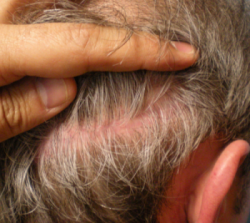Moles, which are known as benign skin lesions, appear when the cells, known as melanocytes, grow in clusters. The cell melanocyte gives the skin the pigment for its natural color. When these cells are not spread throughout the skin they form into moles. Moles usually tend to be brown or black in color and can appear anywhere on one’s skin. Most individuals may have up to 40 moles by the age of 30. 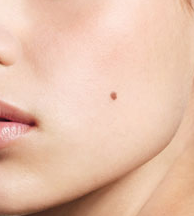
Congenital nevi is a type of mole that appears at birth and can become a cancerous mole. Dysplastic nevi is a type of mole that has an irregular shape and is larger than the size of a pencil eraser. Moles which stay the same throughout your life should cause no concern. However, if you have any mole which becomes itchy, painful or appears after the age of 30, it is recommended for you to see a dermatologist who can better evaluate the mole to make sure it is not cancerous.
Dermatologists may need to do a biopsy to make sure that the mole is not cancerous. The dermatologist can later remove the mole by simply cutting it off. Those who would like to remove a mole for cosmetic reasons may also do so, after speaking to their dermatologist.

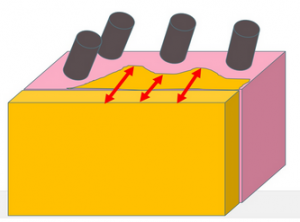 Scar tissue and the transection of the lower portion of hair follicles, on the edge of the scar, are what cause the lack of hair in the scar.
Scar tissue and the transection of the lower portion of hair follicles, on the edge of the scar, are what cause the lack of hair in the scar. 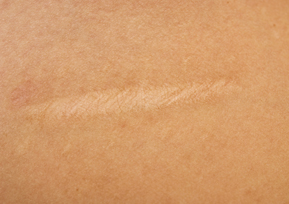 Scars start off by appearing red in color, which is when the blood vessels are inflamed and damaged. This part is known as hyper pigmented scars. Once a scar matures, the skin pigment will be lost and the color will change to white, which is known as hypo pigmented. Scars take approximately six to twelve months to completely heal and become white. The size, shape, and depth of the scar are all factors that contribute to how the scar will look after completely healing. In order to prevent darker scarring and infection, it is important to always keep the scar area clean and moist, during the healing process.
Scars start off by appearing red in color, which is when the blood vessels are inflamed and damaged. This part is known as hyper pigmented scars. Once a scar matures, the skin pigment will be lost and the color will change to white, which is known as hypo pigmented. Scars take approximately six to twelve months to completely heal and become white. The size, shape, and depth of the scar are all factors that contribute to how the scar will look after completely healing. In order to prevent darker scarring and infection, it is important to always keep the scar area clean and moist, during the healing process. 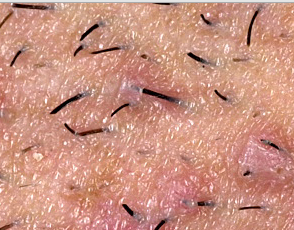 Just like what is seen with pimples, when one has an ingrown hair, it produces a small raised red bump. That bump will be itchy and many times might be sore to the touch. Treatment for ingrown hair may not be necessary at all times because ingrown hair sometimes tends to go away on its own. However, if the ingrown hair does not go away, it is best to treat it as it may leave a dark spot or scar on your skin. If an ingrown hair becomes infected, a doctor’s visit is necessary where they can safely use a needle to release the hair.
Just like what is seen with pimples, when one has an ingrown hair, it produces a small raised red bump. That bump will be itchy and many times might be sore to the touch. Treatment for ingrown hair may not be necessary at all times because ingrown hair sometimes tends to go away on its own. However, if the ingrown hair does not go away, it is best to treat it as it may leave a dark spot or scar on your skin. If an ingrown hair becomes infected, a doctor’s visit is necessary where they can safely use a needle to release the hair. 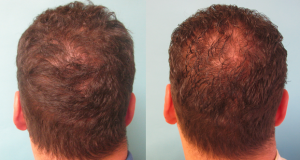

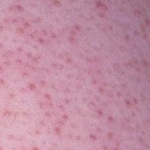 Keratosis pilaris is not harmful, so medical treatment is not necessary. However, scarring may occur as a result of this condition, so it is recommended to exfoliate with a mild soap and moisturize skin at least twice a day. Over-the-counter creams and lotions are what most people use to treat this condition. The effectiveness of these creams is very limited. There have been a few cases that it was treated by laser therapy, however research is still being done to find out the best treatment for this condition.
Keratosis pilaris is not harmful, so medical treatment is not necessary. However, scarring may occur as a result of this condition, so it is recommended to exfoliate with a mild soap and moisturize skin at least twice a day. Over-the-counter creams and lotions are what most people use to treat this condition. The effectiveness of these creams is very limited. There have been a few cases that it was treated by laser therapy, however research is still being done to find out the best treatment for this condition. 
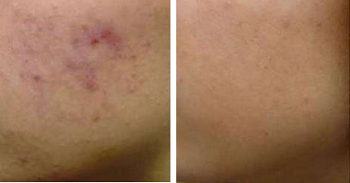 Microdermabrasion is a popular procedure being done to help reduce the appearance of acne scars. This procedure also leaves ones skin looking brighter and softer. It can be performed with all skin types and tones.
Microdermabrasion is a popular procedure being done to help reduce the appearance of acne scars. This procedure also leaves ones skin looking brighter and softer. It can be performed with all skin types and tones.
